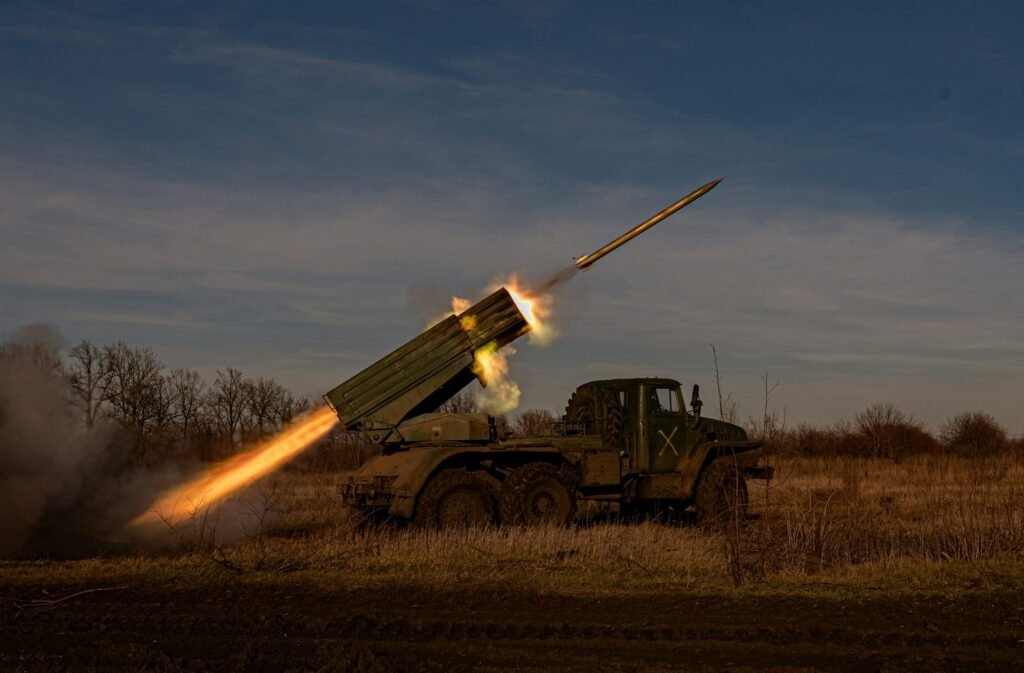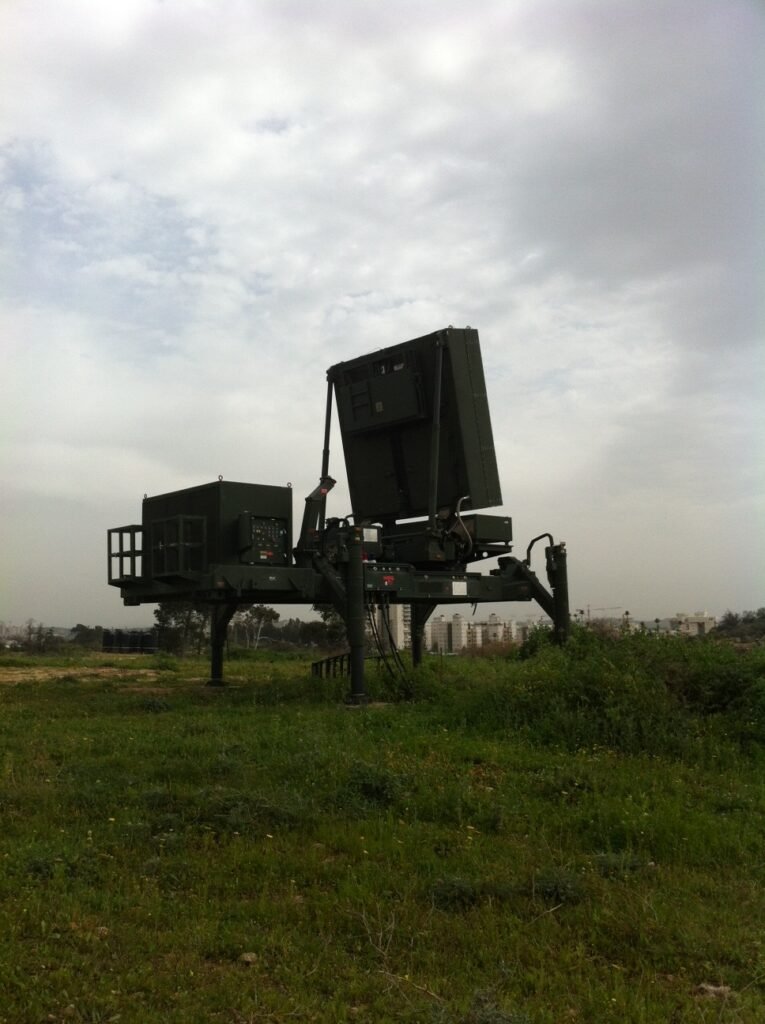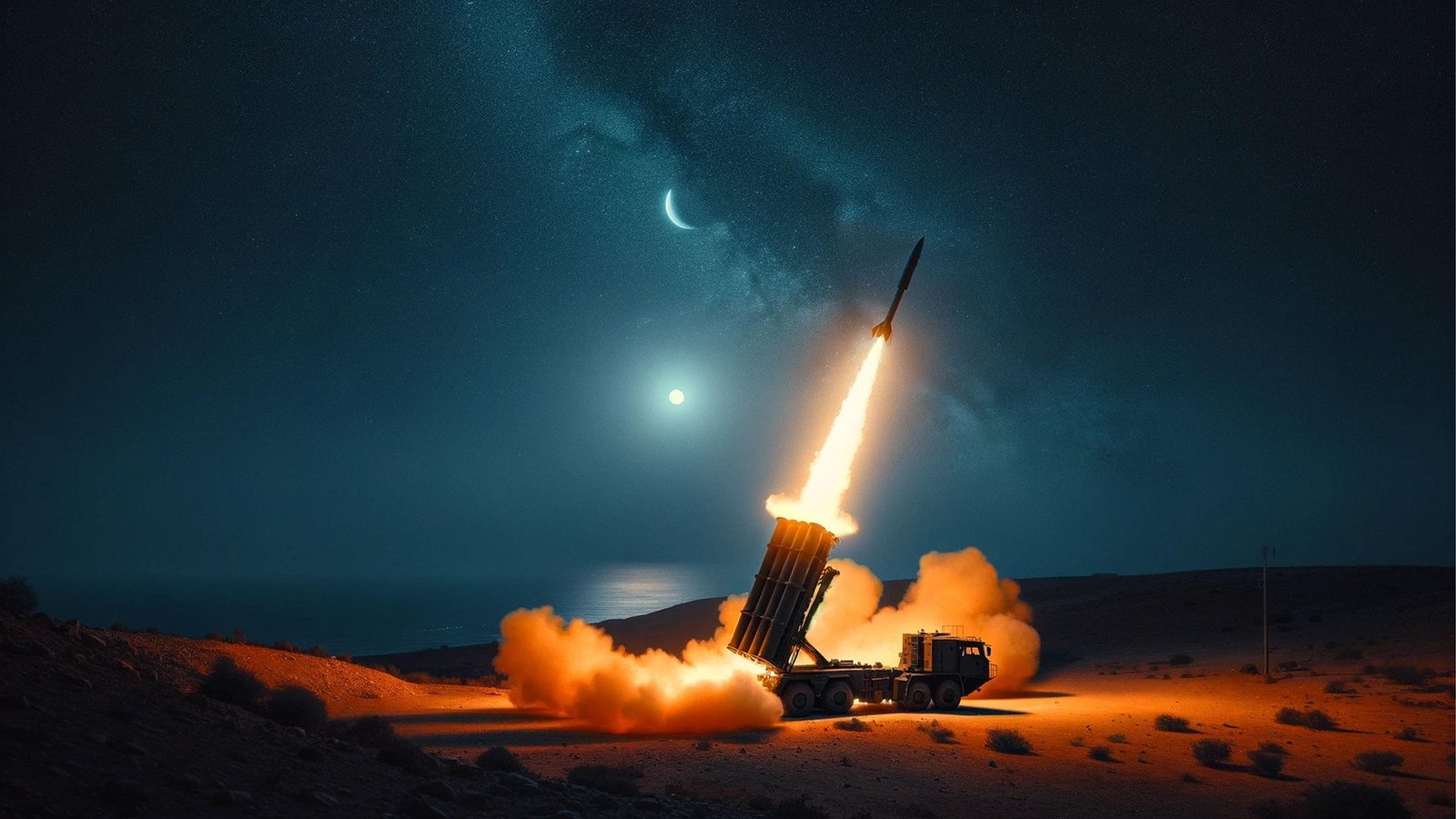Introduction
In the evolving landscape of modern warfare, where asymmetric threats and rapid projectile attacks have become the norm, traditional defense systems often fall short in protecting civilian populations and critical infrastructure. In this article we are going to give a closer look to Iron Dome— Israel Defense System. A revolutionary mobile air defense system developed by Israel to intercept and neutralize short-range rockets, artillery shells, and mortars in real time.

First deployed in 2011, the Iron Dome has since become a symbol of technological ingenuity and strategic necessity. Designed to operate in complex and dynamic combat environments, it has repeatedly demonstrated its ability to protect urban centers from rocket barrages launched by hostile entities, particularly in the context of conflicts along Israel’s southern and northern borders.
What sets the Iron Dome apart is its multi-layered architecture and selective interception capability, allowing it to calculate whether an incoming projectile will hit a populated area or fall harmlessly in open terrain—thereby optimizing engagement decisions and minimizing operational costs. With a reported intercept success rate of over 90%, it has drawn global attention not only for its battlefield effectiveness but also for its implications on military doctrine, defense economics, and homeland security strategies.
Development and Deployment of Iron Dome
The Iron Dome was developed by Rafael Advanced Defense Systems, in collaboration with Israel Aerospace Industries (IAI) and funded partially by the United States. The urgency for such a system became apparent during the 2006 Lebanon War, where thousands of rockets from Hezbollah overwhelmed Israel’s northern regions. In response, development accelerated, with successful field deployment achieved by 2011.
Since then, the system has been deployed across various strategic locations in Israel, often repositioned based on threat intelligence. It has seen continuous upgrades in response to changing threats, with improvements in radar accuracy, interceptor speed, and software algorithms.
Iron Dome system architecture
The Iron Dome is composed of three main components:
- Detection and Tracking Radar: Developed by ELTA Systems (a subsidiary of Israel Aerospace Industries), the EL/M-2084 is a radar system capable to detect incoming aircraft, ballistic targets and providing fire control guidance for missile interception or artillery air defense.
- Battle Management and Control Unit (BMC): Built by mPrest Systems, this command-and-control system analyzes radar data to determine whether a threat poses a danger to protected areas. It then calculates an optimal interception point.
- Missile Firing Unit (MFU): Armed with Tamir interceptor missiles, the MFU receives firing instructions and launches interceptors to neutralize threats mid-air.
These components are distributed across mobile and semi-mobile platforms, enabling rapid redeployment and scalability in various terrains and combat scenarios.
How Iron Dome Works – Technical Deep Dive
When a projectile is launched toward Israeli territory, the Iron Dome’s radar detects it within seconds. I think can be useful to spend few words on the EL/M-2084 RADAR (see picture on the right).
Even if it is hard to find specific information on it, we can rely on the fact that is an AESA RADAR. AESA means “Active Electronically Scanned Array” (in the future I will provide dedicated articles on this technology).
However, a key concept that I would like you to bear in mind, is that this huge square plate is a radar. I know what you are thinking, this is a weird shape and why this radar is not performing a 360 degrees rotation? Well, the simple answer to this question is that this type of RADAR are composed by an antenna array.

This means that behind the huge square radome (the radar cover) there are several small antennas, like small circles that we can call antenna elements, that are able to transmit and receive power or in other words to radiate electromagnetic (EM) waves. The differences between this technology and the mechanical radar are many, in particular we are going to approach few main differences.
Since this radar is composed by an array of antennas, it is not necessary to rotate it. We know that the standard radar effect is base on the Doppler Effect. In general, we have a EM wave that is generated by the antenna during the transmitting mode, this wave will propagate in the air until it will find an object. Then, the object will reflect the wave in the opposite direction; in this way the wave will come back to the AESA pannel and analyzed by the radar processor (this can be called receiving mode). Obviously, this is the basic of RADAR functioning, in reality there are several technology able to analyze the frequency and phase shift of a waveform; but for the moment it is enough.
Here, we are not talking about of a single EM wave, but since there is an antenna arrays there will be multiple electromagnetic pulses generated by every aforementioned antenna elements. The radio signals from the separated antennas overlapped in space, this is going to generate the interference patterns (interference means that the signals from all the antennas are going to meet each others in a way that can sum or subtract the signals, depending on several controlled parameters) between the individual signals controlled to reinforce the signal in certain directions, and mute it in all others. In fact, the delays between the different “antenna shoot” can be controlled electronically, allowing the beam to be steered very quickly without moving the antenna. In other words, the antenna beam can illuminate multiple points of the space quickly only controlling the antenna elements. The advantage of this technology is based on the fact that the antenna does not have to rotate three-sixty to re-illuminate the same point of the space or the same object, therefore to wait from 4-12 seconds like a standard airport radar. Instead, this AESA technology can illuminate and keep track of an object several times within a second. Take into account that the time to radiate and receive a signal is less than a millisecond.
The two key concepts here are the following:
- This radar does not need to rotate to scan the space in front of it. The only problem, is that the AESA is not able to cover 360 degrees of space and this is why (as mentioned below) Israel needs to locate, across the area they would like to protect, several batteries.
- The feedback that can obtain is very quick. Think on the fact that considering an object at a 100km distance and a radar waveform speed (equal to the speed of light in the air), it is easy to calculate that from the shot to when the wave is returned to the AESA pannel, only approx 670 microseconds have been passed. Therefore, in a second the radar is able to perform approx 1500 shots, which means to cover 1500 different points of 100km space. In case, the wave impacts an object that is closer, to the AESA pannel, the signal will return in a shorter time.
The RADAR system immediately transmits this huge amount of data to the Battle Management and Control Unit (BMC). Also in this case, it is difficult to find dedicated information (and from my honest prospect is fair that we are not able to find this kind of information, since they are probably considered classified), but we can assume that the platform on which the AESA pannel is located, the radar itself or directly the BMC are able to receive the GPS data in order to know where they are located in the space. This allow the BMC to understand the location and the speed of the enemy missiles, predicts the future trajectory and estimate the potential impact zone of the threat knowing the Tamir missile capabilities in terms of speed and explosion area.

In particular, the Tamir missile features a solid-propellant rocket motor, electro-optical guidance system, and a proximity-fused warhead. Using onboard sensors and real-time updates from the radar, the rocket is capable to intercept the target and detonates near it to destroy or deflect the threat (in the image on the left, there is a very simplistic scheme just to understand the situation).
The BMC is capable to understand if the threat is projected to strike a populated or critical area that can damage buildings and people. Probably, the sistem integrates a map of the are or simply the coordinates that shall protect. In case the system decides that the impact of the enemy missile is located in critical area, a Tamir interceptor is launched.
What makes the Iron Dome particularly efficient is its ability to ignore projectiles that are calculated to land in uninhabited areas, thereby conserving interceptors and reducing operational costs. In this way, it can be considered as a “missile filter” able to distinguish the level of risk for each threat.
According to BBC data the system consists of 10 batteries located across Israel, each with three or four launchers; and each launcher contains up to 20 missiles. In the end, these systems located in an area, that can cover the entire city, they are able to generate a hemispheric shield, like a cathedral Dome.
According to ELTA specifications, the system has the capability to track up to 1100 targets for Air Surveillance purposes and the system is able to operate in a range between 4 to 70 km. Just a brief note, in the example that was mentioned before, we performed some simplistic calculations to let the reader to understand some radars aspects, in particular we stated that a radar can identify 1500 objects (or more or less depending on several factors). Here, data are telling us that 1100 targets can be tracked; tracking targets in this case means that the object has been identified as a thread and the system is able to continuously scan it, until the object is not shot down.
Furthermore, an important characteristic of the RADAR is that they are able to operate day-night and in all weather conditions (maybe with some performance reductions) but anyway this makes radar more versatile than electro-optical systems in this specific war context. But, what about allies that are going to fly on the Israeli battlefield? It seems that Iron Dome is able to recognize them. In fact, it is reported that this solution is totally safe for friendly aircraft.
Iron Dome System Performance
In 2012, Israel reported that its Iron Dome defense system intercepted 84% of rockets launched by Hamas from Gaza, engaging 573 targets and successfully destroying 421.
However, in 2013, MIT defense analyst Professor Theodore Postol challenged this claim, suggesting the actual interception rate may have been as low as 10%, or potentially even zero. Despite this, in 2021, the Israeli military stated the Iron Dome achieved a 90% success rate during a barrage of 3,000 rockets fired from Gaza.
At the onset of the current conflict, Hamas claimed to have launched 5,000 rockets, though Israeli sources estimate the number was closer to half that.
According to the Israeli military, the Iron Dome intercepted 153 rockets, with many others falling in unpopulated areas or within Gaza itself. Nevertheless, Israeli media has reported casualties and injuries from rocket strikes in southern Israel and the Tel Aviv region.
Even if it is not so easy to identify the real capabilities of Iron Dome. It is possible to state that the system has been tested in numerous real-world combat scenarios, most notably during the Gaza conflicts (2012, 2014, 2021, and 2023). It has intercepted thousands of rockets, with reported success rates often exceeding 90%, according to RAFAEL website. This performance has significantly reduced casualties and damage to infrastructure, altering the strategic calculus of Israel’s adversaries.
Anyway, its deployment has enabled Israeli civilians to continue daily life during rocket attacks, with the reassurance of a high-probability intercept capability. Urban defense, once deemed nearly impossible against short-range threats, has become a viable and effective strategy.
Limitations and Criticisms
Despite its success, the Iron Dome is not without limitations. Saturation attacks, where dozens or hundreds of rockets are launched simultaneously, can strain the system’s response capacity. Each Tamir missile reportedly costs between $40,000 to $100,000, whereas many incoming rockets cost a fraction of that to produce.
Critics also point out that while the system provides a tactical shield, it may contribute to a strategic imbalance by prolonging conflict cycles.
Advancements and Future Directions of Iron Dome
There are several baselines of this product:
- IRON DOME: is the combat-proven solution that it is mentioned above
- I-DOME: The mobile solution that includes all the integrated systems installed on a single truck. Instead of the Standard IRON DOME, this solution provides only 10 interceptors, radar and BMC.
- C-DOME: is an advanced naval configuration, based on the combat -proven Iron Dome. This is developed to cover the maritime operational scenarios, in particular it protects ships and other sea-based strategic assets from modern naval threats.
A useful capability is that this system can be integrate with different detection system. Therefore, in the future, it can be integrated with different and more powerful radars to increase range and performances.
To address saturation threats and cost concerns, Israel is developing complementary systems like Iron Beam, a laser-based defense system capable of intercepting drones, mortars, and rockets at a lower operational cost.
Additionally, I think in the future there will be multiple possibilities to integrate the system with AI and machine learning to enhance target recognition, response time, and interception efficiency.
The U.S. military has also shown interest, purchasing Iron Dome batteries for testing and potential integration into its layered missile defense strategy. This international collaboration may lead to further refinements and scalability.
Conclusion
The Iron Dome represents a leap forward in missile defense technology. Its ability to dynamically assess and respond to threats in real-time has reshaped urban warfare and air defense strategies. While it is not a complete solution to regional conflicts or high-volume missile saturation, it provides a powerful and proven example of how advanced technology can be harnessed to protect civilian populations and maintain strategic stability.
As threats continue to evolve in range, volume, and sophistication, defense systems must also advance in parallel. The future of the Iron Dome—and of missile defense more broadly—lies in greater automation, integration with other defense layers (such as lasers, cyber capabilities, and satellite tracking), and enhanced predictive intelligence.
What makes the Iron Dome especially significant is not only its military utility, but its purpose and also its impact on the society. It offers the possibility of preserving normal daily life even under persistent threat.
Imagine living in a peaceful community—raising a family, building a career, investing in a future—only to lose everything in an instant because of a missile strike. Your home, your loved ones, and the life you built turned to rubble without warning. That is what war does: it does not just destroy buildings, it destroys lives and erases futures. But with systems like the Iron Dome, that tragedy doesn’t have to be inevitable. It can be prevented.
This is the promise of defensive technology: not to retaliate or destroy, but to preserve. To safeguard the dignity of human life. To allow people to live without fear. The global community should strive toward such solutions—not technologies of offense, but of protection; not weapons that take lives, but systems that save them.
